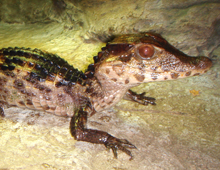
In the 1960s, vast numbers of the tiny, brightly colored young of this species were sent to the US with shipments of tropical fish, but most did not survive. Since females may exceed 17 inches in shell length, they are not appropriate for most home aquariums. Serious private collectors and zoos have done well with them, and they have bred many times in captivity. While considered vulnerable to extinction, they remain an important resource for Native Americans in parts of their wide South American range.




